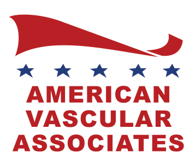Climbing the Stairway to Success: 3 Primary Steps for Opening Your Private Vascular Practice
There are always more steps to be climbed on the career ladder, and, for some, no step is quite as rewarding as finally opening their own private practice.
Particularly for those vascular surgeons and interventional radiologists who have been burned out by the constant pace of the hospital or academic setting, a private practice isn’t merely a personal accomplishment; rather, it’s the opportunity to simultaneously optimize their work/life balance while enhancing the patient experience.
Thus, if this sounds like a desirable endeavor, we’re here to walk you through the three primary steps to opening your own private practice:
Step #1: Focus On Location & Development
Come time to search for a suitable parcel of land on which to establish your practice, you’ll want to keep several patient-related factors in mind:
- Is there easy parking?
- Is the building itself easily found?
- Is it wheelchair accessible?
- Is it near a bus route or other form of public transportation?
Additionally, it would serve both you and your staff to develop your practice in an area near your target demographic. That being said, you’ll want to be mindful, too, of the specific zoning areas and permitting requirements defined by your local governmental body.
Lastly, remember to ask questions about the size of your property. Specifically, for an outpatient vascular center…
- How many patient rooms would you like to keep available?
- Do you have adequate space to develop your office-based lab?
- Can your medical equipment and technology fit in the provided space?
- And more
Step #2: Manage Your Center & Revenue
Once you’ve secured your location and familiarized yourself with the local medical landscape in the area, you can turn your attention inward to the practice itself.
In terms of center management, it’s critical that you implement specific workplace guidelines in order to establish the most effective and efficient processes possible. Consequently, ask yourself: what does the ideal day-to-day process look like to you, from scheduling to billing to administrative responsibilities and programming?
For example, one survey conducted by the Society for Vascular Surgery (SVS) found that responding vascular surgeons spent approximately “5.0 ± 6.1 hours on the electronic medical record (EMR) and 5.6 ± 5.4 hours on administrative and scholarly work.”
By tackling your management strategies early on, you may be able to more easily avoid being consumed by tasks that would take you away from your patients.
Otherwise, consider how the revenue cycle may play also into that management strategy.
“In general, the components of the revenue cycle follow a systematic progression that closely mimics the patient’s journey through their individual medical episode,” an article published by the Journal of Vascular Surgery reveals. “One step builds on the other in a logical flow leading to the final objective—payment in full.”
Step #3: Step Confidently Into the Center Stage
Once you’ve thoroughly combed through your business strategy from top to bottom, there are really only two things left to do: find new patients and sustain your growth.
This is where a long-term marketing strategy comes into the picture, as networking alone won’t necessarily drive continual leads or foster relationships with the surrounding community.
“A basic knowledge of marketing combined with a common-sense approach can yield dividends for those practices that need the service,” as written in an article by Anand and Bhagwan Satiani. “For surgical practices that exist in heavily populated urban areas with significant competition, a well thought out marketing plan can assist the practice in reaching out to new groups of patients and maintaining the existing patient base.”
That all being said, let’s take a step back.
We’re well aware that we just provided you with a bulk of information to process, the likes of which are likely to divert your time, energy, and attention away from medical practice and onto business establishment.
And we know that’s not why you entered this industry.
That’s why, here at American Vascular Associates, we specialize in removing the burden of business administration from leading physicians. As a matter of fact, our key service pillars encompass all of the aforementioned responsibilities and more!
By utilizing a synergistic model of outpatient care that is physician-driven and patient-focused, we directly enable both you and your team to step away from the desk back into the consultation room.




